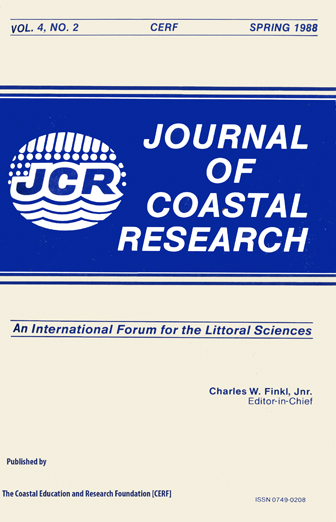Sea-Surface Temperature and High-Tide Beach Change, Stanwell Park, Australia, 1943-1978
Keywords:
Australia, beach change, beach retreat, cyclogenesis, Tasman SeaAbstract
Along the east Australian coastline, warmer sea-surface temperatures (SST) in the Tasman Sea can give rise to more intense cyclogenesis which leads to 'storm' events that can exacerbate ongoing beach retreat. Sea-surface temperature patterns in the equatorial Pacific and around Australia also provide an indication several months in advance of coastal rainfall trends which have been linked to HT retreat on Stanwell Park beach. This retreat has been measured to an accuracy of 1.0 m using oblique photographs for the period 1943-1978. At the same time SST collected weekly offshore from Sydney, 30 km to the north, was found to represent the general surface pattern of ocean temperatures in the Tasman Sea. The two records are amongst the best of their kind in the world. Linear modelling using these parameters, as well as sea-level and rainfall data, shows that SST in combination with sea-level accounts for 17.6% of the HT data variance while annual rainfall accounts for a further 7.2%. It appears that warm SST must occur concurrently with higher sea-levels for retreat to be evident. Analysis of environmental conditions for 6 'storm' events indicates that, over the short term, factors conducive to beach retreat do not operate all the time. It is only when long term trends are examined that warmer SST, and higher sea-level and rainfall, can be correlated to HT retreat. The prognostic ability of SST to forecast periods of likely beach retreat is at present lacking until more information becomes available on the relationship between SST and the intensity and tracking of low pressure cells.


